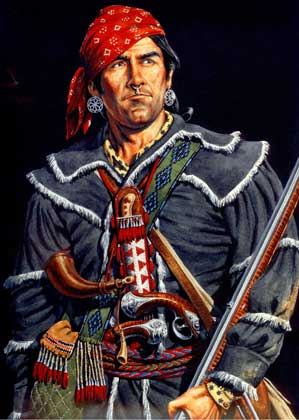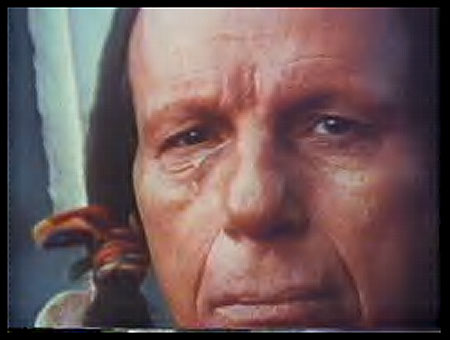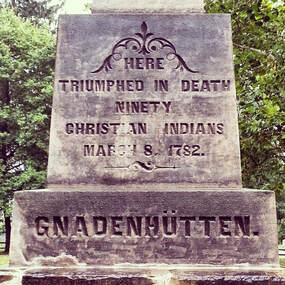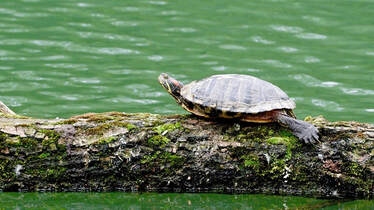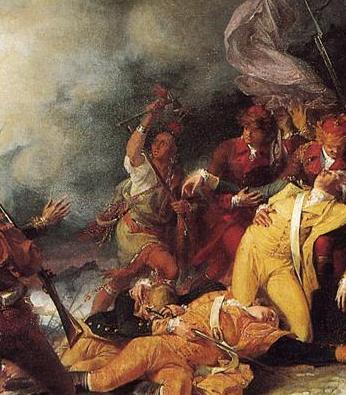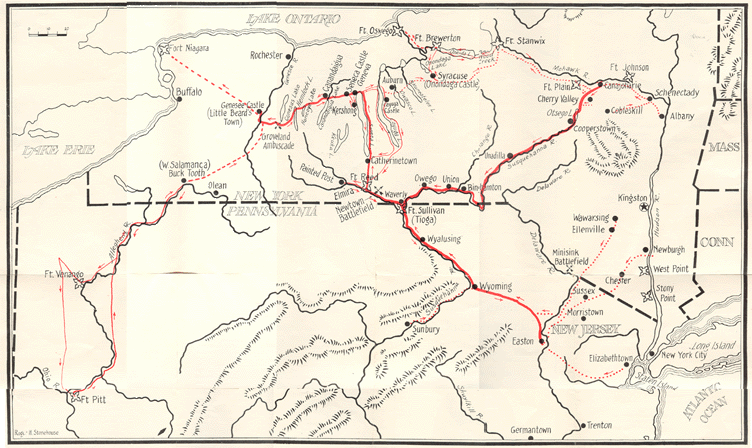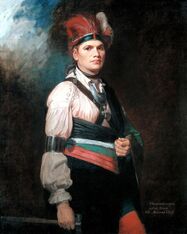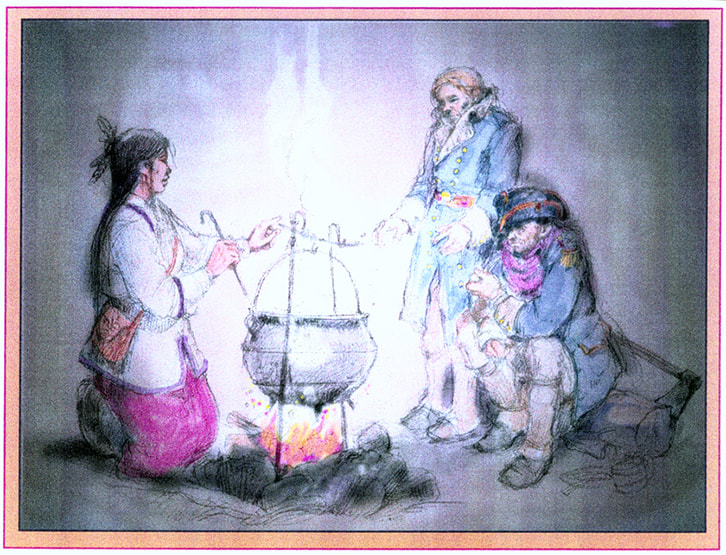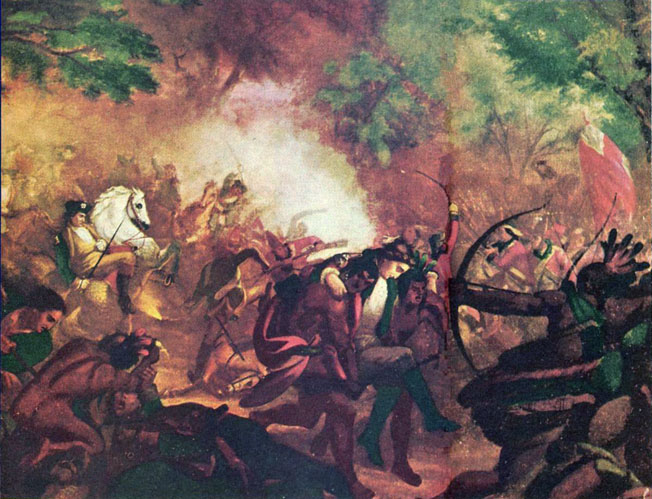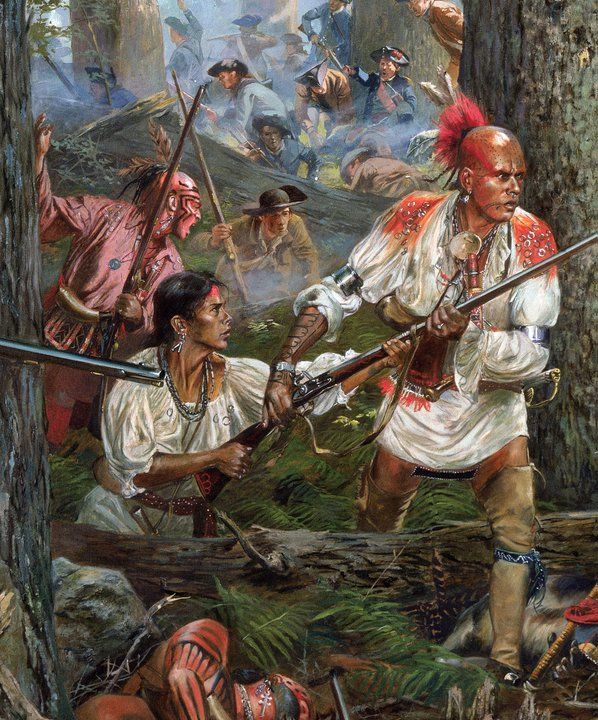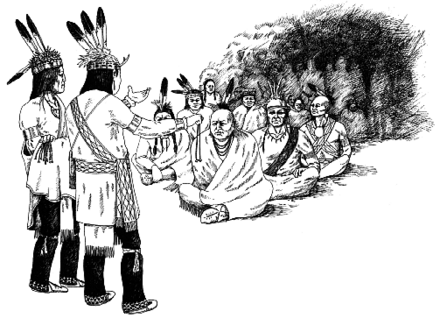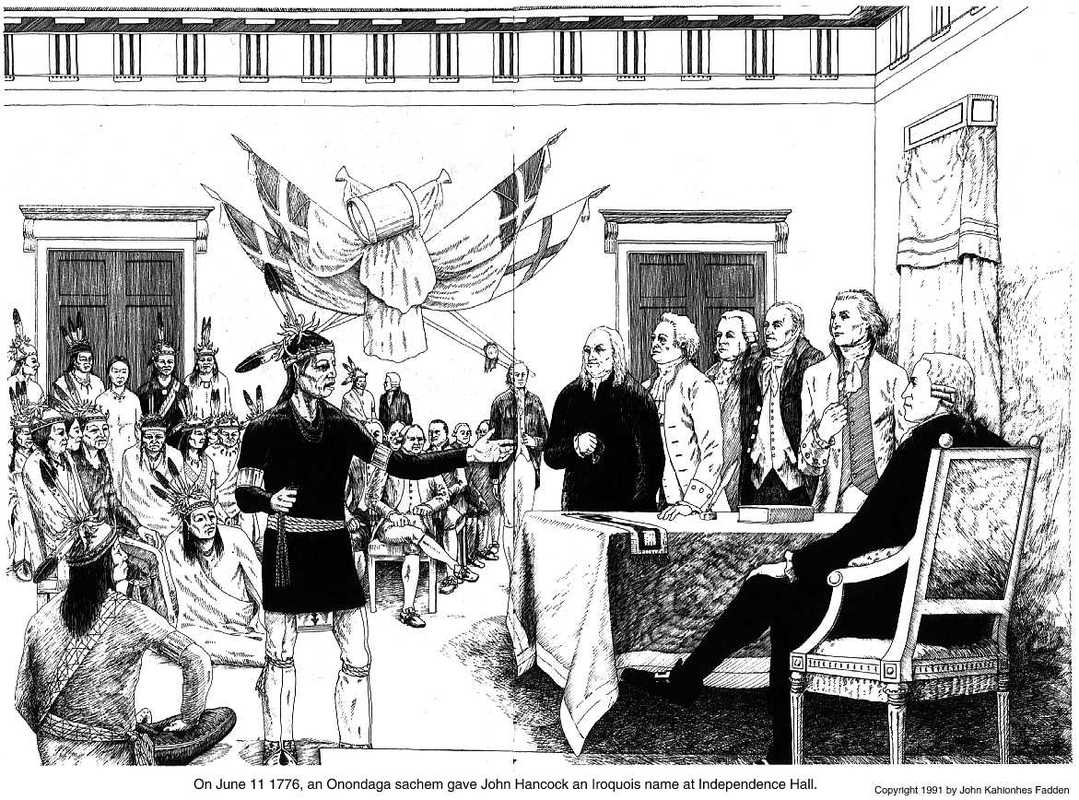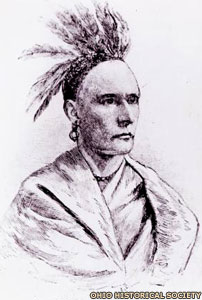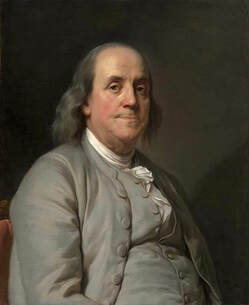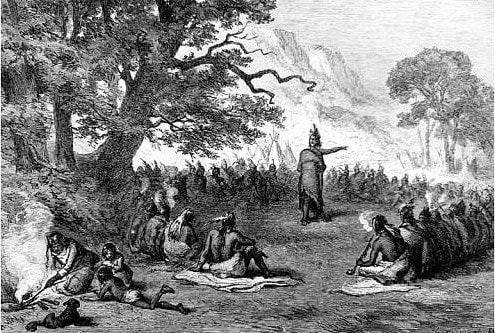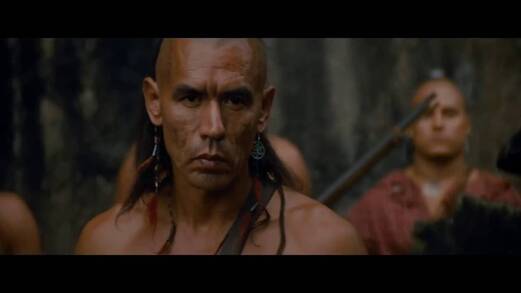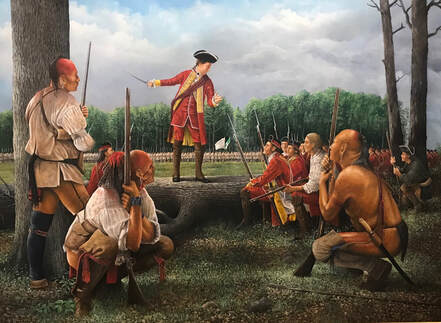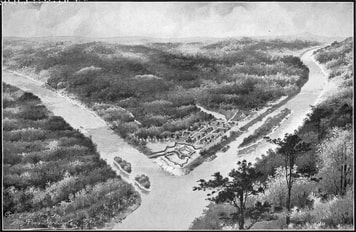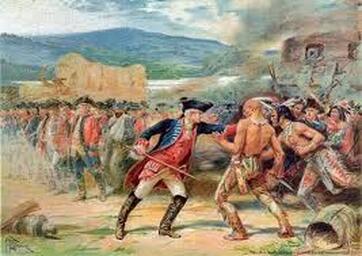|
The 1794 Treaty of Canandaigua is one of the most important treaties in the history of the Haudenosaunee. It guarantees the rights of sovereignty for the Six Nations, while at the same time making huge land concessions. It is a treaty that has faced numerous violations throughout it's 200+ year existence. However, it is still one of the oldest unbroken agreements in United States history.
Following the American Revolution dozens of Indigenous Nations are left to fend for themselves as British support evaporated. But from 1791 to 1792 the Ohio peoples would win battle after battle and not just win in those conflicts but wipeout entire American Armies.
Simon Girty was a man larger than life. To Americans he was a vile traitor who killed the innocent with his savage friends. To the British he was a rough drunk but a useful tool. To the Iroquois and other Ohio Nations he was a prodigal son who was raised as a Brave and then returned to fight for his adopted people's freedom.
On this very special first day of the April month Learn about three famous members of the Wannabe Indian Tribe.
How would you fare in your faith when you are faced with certain death? In 1782 a community of mainly Lenape (Delaware) Christians were victims to one of the most heinous acts in American History.
After numerous requests we are back with two more Haudenosaunee animal tales. In the first story Turtle leads a war party of misfit animals against Huk-sah, the feared Jungie. In the second Weasel and Owl are featured in a dark story of hate, revenge and forgiveness.
Joseph Brant, Colonel Louis Cook, Walter Butler and Simon Girty deal with the horrors of war and the devastation of the Great Lakes region.
General Washington gave command to John Sullivan in 1779 to outfit and lead an expedition into the Seneca-Cayuga homeland. It will be a scorched earth campaign that will leave almost the entire population of both the Seneca and Cayuga Nations homeless. Destitute of any food or clothing thousands will head to Fort Niagara for shelter.
Spies are everywhere in 1778 on both sides of the conflict. Joseph Brant leads Iroquois forces against Patriot settlements throughout Upstate New York. Conversely American and Oneida soldiers launch counter attacks against Brant's supporting towns in Iroquoia.
Forty-one members of the Oneida Nation traveled to Valley Forge, PA in the Spring of 1778. General George Washington greeted each individual in person and warmly. The warriors went on to assist the Marquis de Lafayette at the Battle of Barren Hill and Polly Cooper an Oneida woman brings her experience as a cook and healer to the needy Continental Army. Episode 42 is up ready for your ears.
Following the American-Oneida victory at Fort Stanwix rifts grow deeper within the Six Nations. Over 300 members of the Haudenosaunee gather at Albany for a Conference. Just as it finishes however word arrives that Burgoyne's British army has crossed the Hudson River at Saratoga.
To Haudenosaunee People the 1777 Battle at Oriska is known as "The Place of Great Sadness" Here brother fights brother as this event leads to a civil war among the Six Nations.
General John Burgoyne prepares his invasion from Canada to crush the rebellion in the Mohawk Valley. Battle lines become drawn among the Six Nations.
Click to set custom HTML
With War in North America again imminent how will this Six Nations decide which side to take. This week we look at Akiatonharonkwen (Joseph Lewis Cook), Thayendanegea (Joseph Brant) and Guyasuta and how they dealt with the gathering storm.
This week we setup the board and talk about how Native Americans were influential in many stages of the road to Revolution.
Logan was a friend to all. That is until squatters killed off his entire family, sparking the 1774 conflict known as Lord Dunmore's War.
With the Seven Years War winding down. Jeffery Amherst the British Commander-in-Chief of North America has to reduce spending drastically. One of the things he cuts to almost zero is the budget for allied Native Nations. Also colonists begin pouring into the west in violation to the Treaty of Easton. A Seneca man named Guyasuta will try to resist these encroachments and a prophet named Neolin will inspire a pan-indigenous revival which in turn inspires an Ottawa man named Obwandiyag to drive out the British from the Great Lakes. The British however called him Pontiac.
Today we have a very special extended episode. The first of its kind we have Steve Guerra from Beyond the Big Screen Podcast and The History of the Papacy Podcast. We join him in discussing the 1992 film "The Last of the Mohicans". We discuss context and historical accuracy. We hope you enjoy. And please listen to Steve's other shows.
We are back with three stories that Haudenosaunee people tell. The first one is a short story on where stories come from. Then we have a tale about Bear and Buffalo. Finally we have Skunny-Wundy. A person who just can't help but tell everyone how great he is.
Today we end our seven part series on the French and Indian War. The years 1759 and 1760 would see the end of all conflict in North America for the Seven Years War. This week we cover the Battle of the Plains of Abraham, how the Haudenosaunee united with the Canadian Iroquois against the French, the Battle of the Thousand Islands, the burning of the Onondaga village of Oswegatchi, the fall of Montreal and the Treaty of Paris in 1763 that forever changed the balance of power in North America.
During the Summer of 1759 almost 1,000 Iroquois Warriors led the British against the French fort and castle at Niagara.
As the Iroquois look on, the British are slaughtered at Ticonderoga, but the French loose Fort Frontinac, Native Americans sign the treaty of Easton and George Washington finally helps takes back the Ohio Country.
Andrew is a guest on The Eastern Border Podcast. During this episode he and Kristaps Andrejsons, the host, discuss tribal comparisons between Native Americans and ancient Balts. We also discuss reservations, oppression, culture, tribal customs and myths. Hope you’ll enjoy this. Kristaps Andrejsons. lives in Riga, Latvia, he has a master’s degree in western philosophy from the University of Latvia (and is currently working on his PhD). His podcast is about the politics and the history of the eastern Europe – including, but not limited to the current state of Russia, politics of the EU, history of the USSR and the region in general. He has had numerous guests on his show to discuss history and political matters. Most recently Dan Carlin the host of the shows "Hardcore History" and "Common Sense".
In 1756 The Iroquois warn the British outpost of Oswego that the French will soon be upon them. Then in 1757 over 6,000 French and 1,000 allied Indians will attack Fort William Henry at the south end of Lake George.
|


